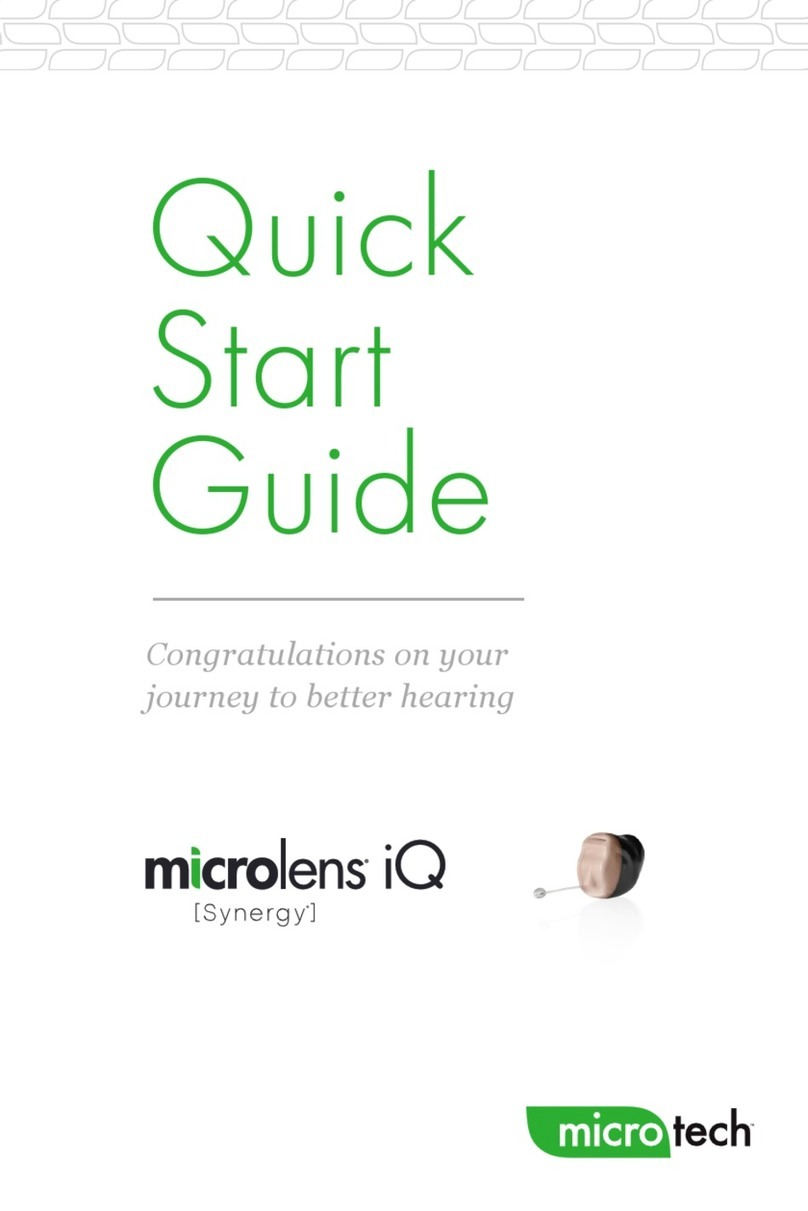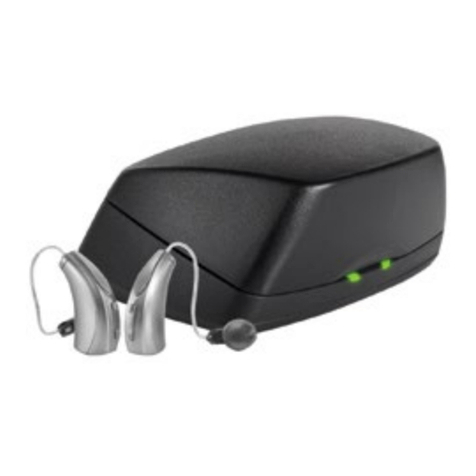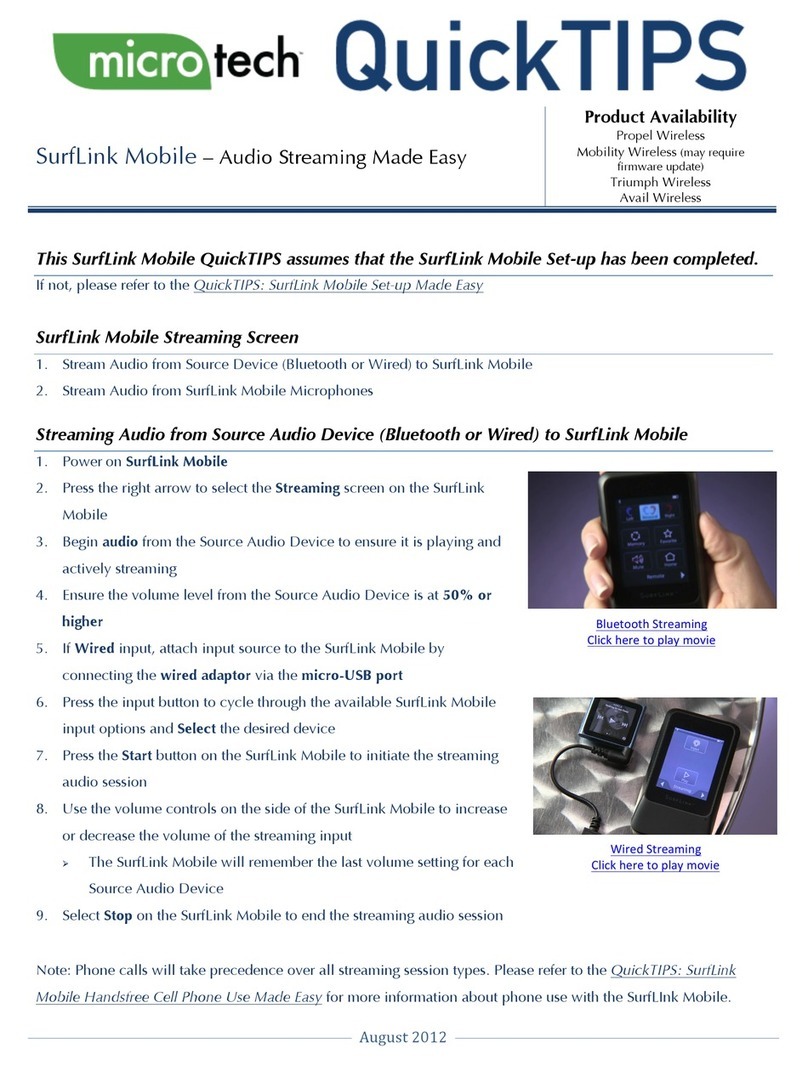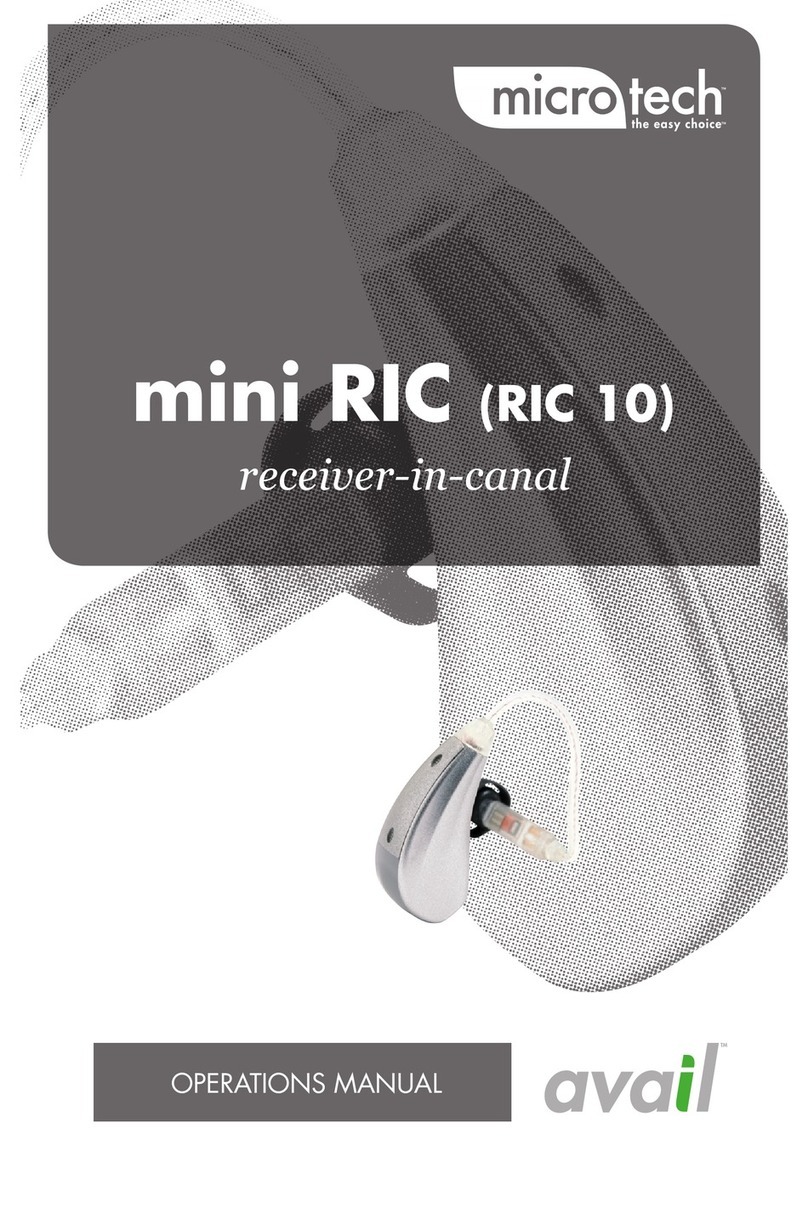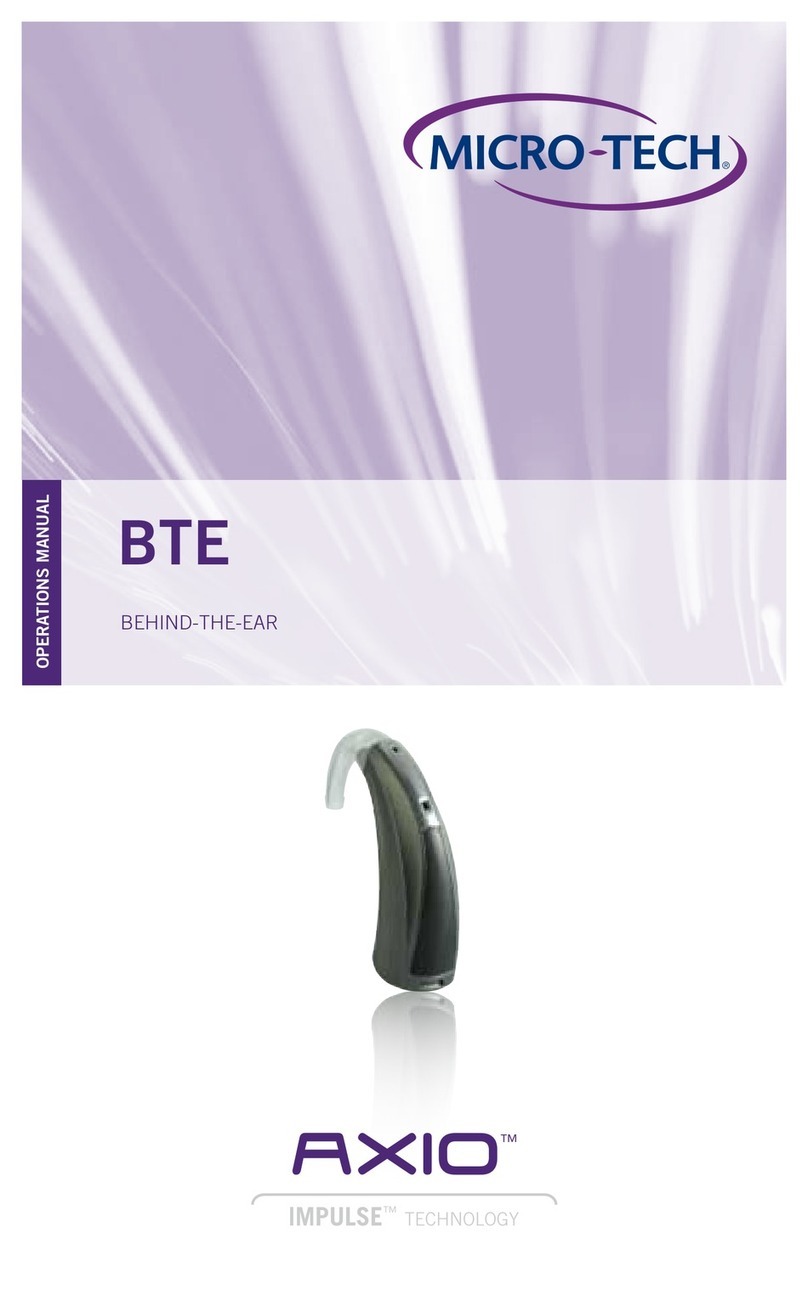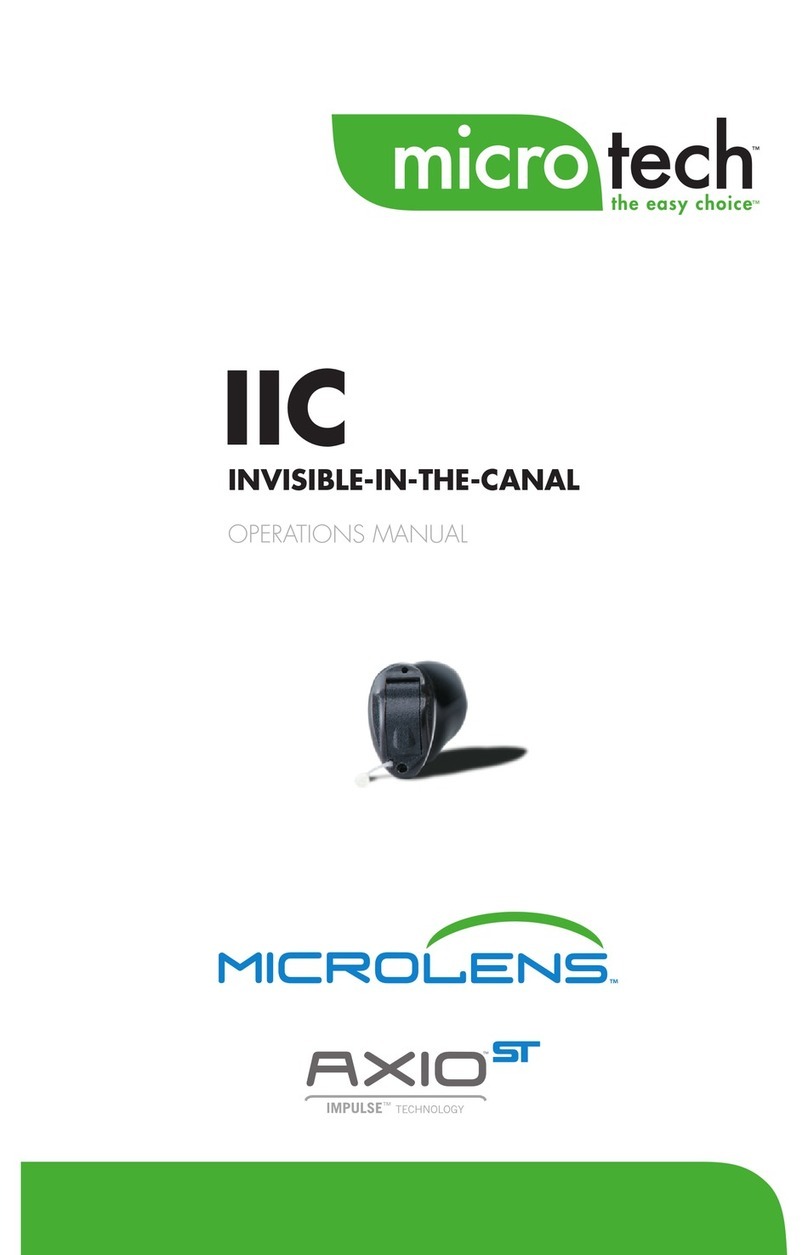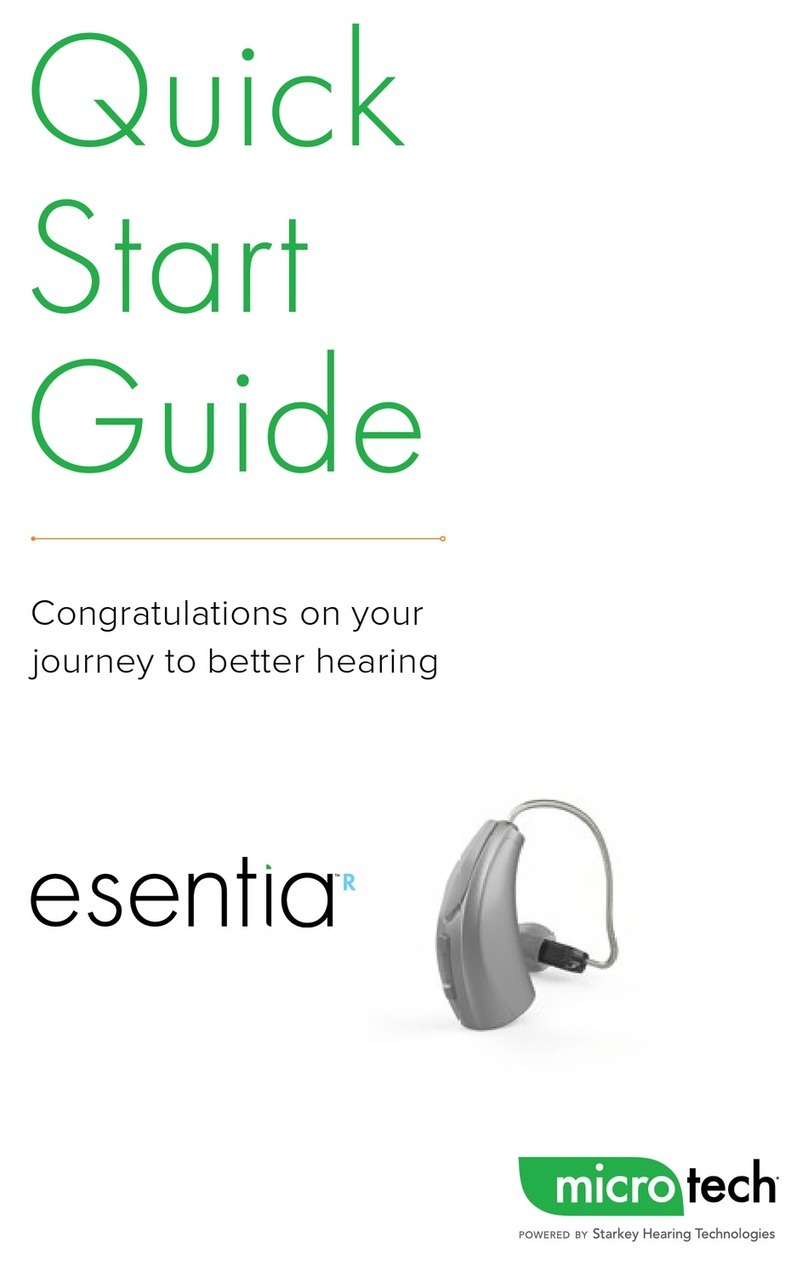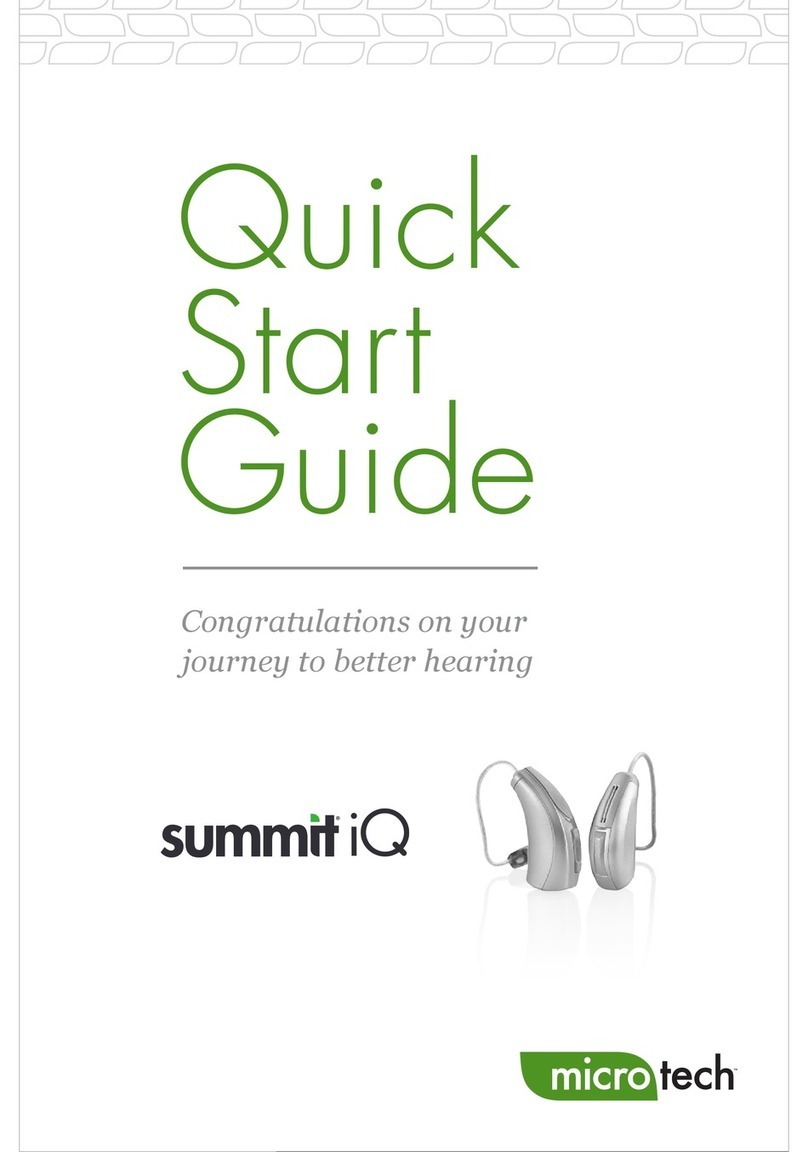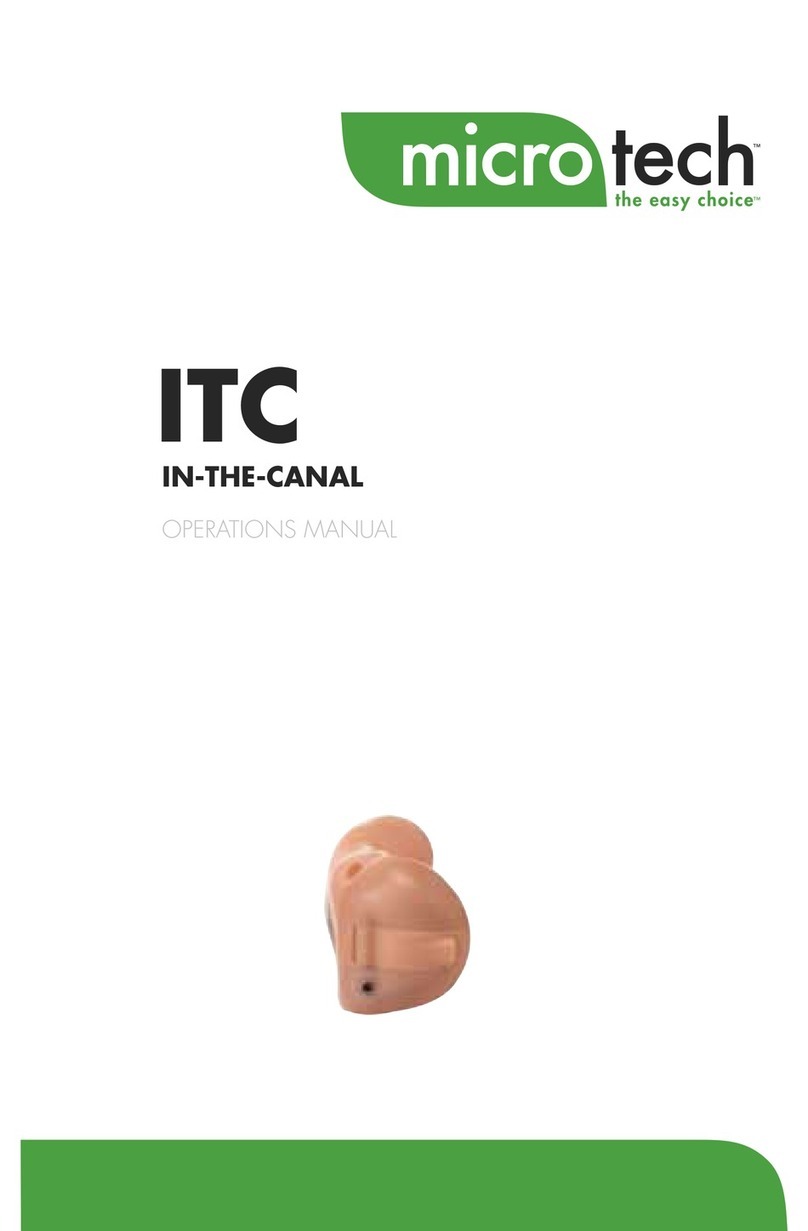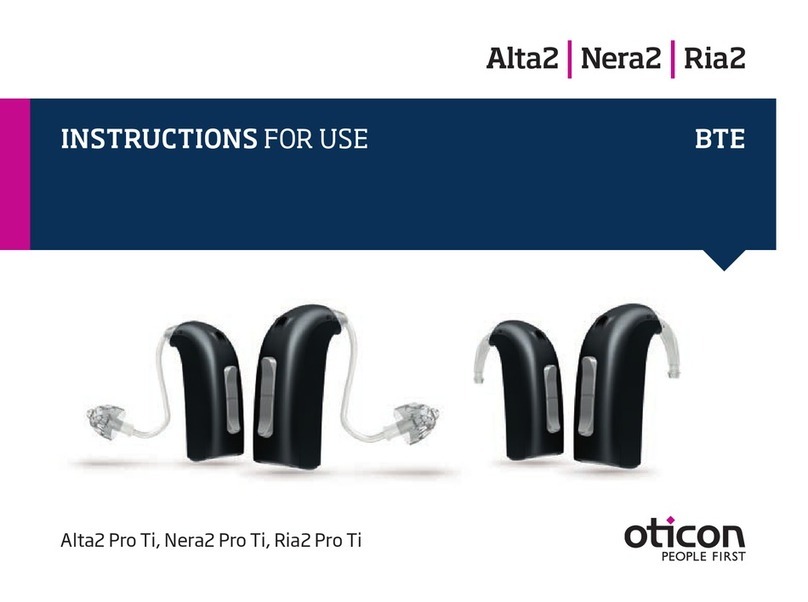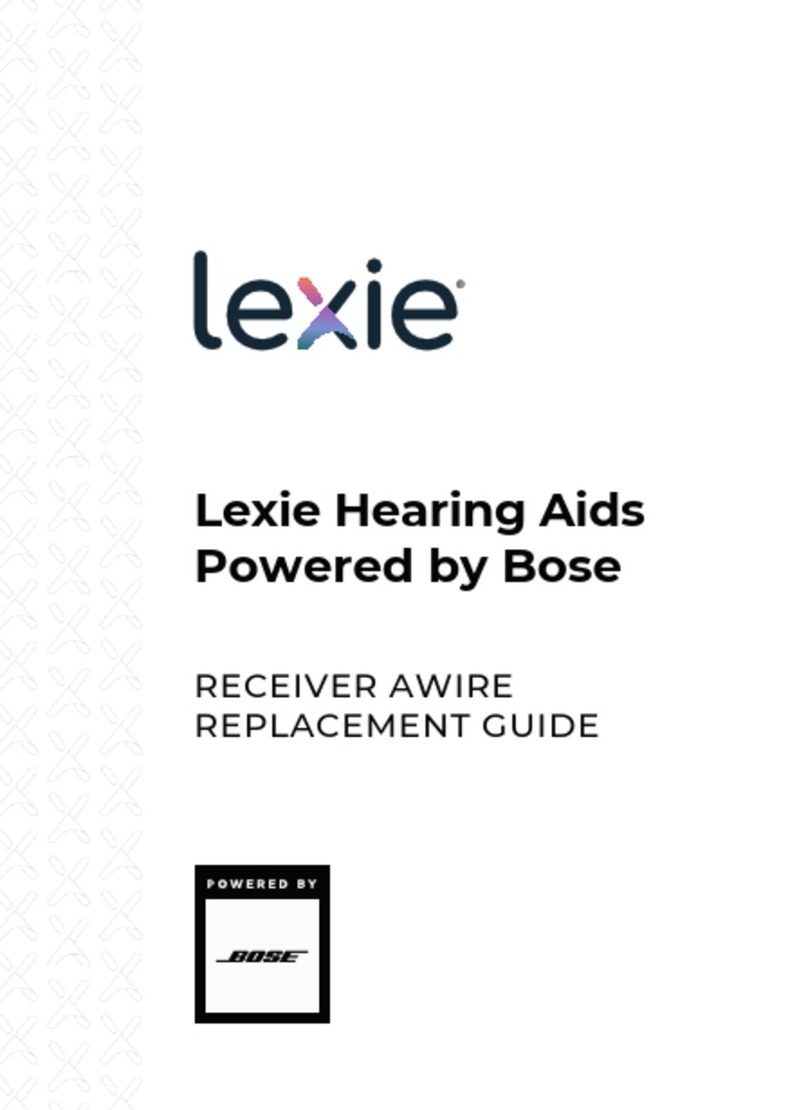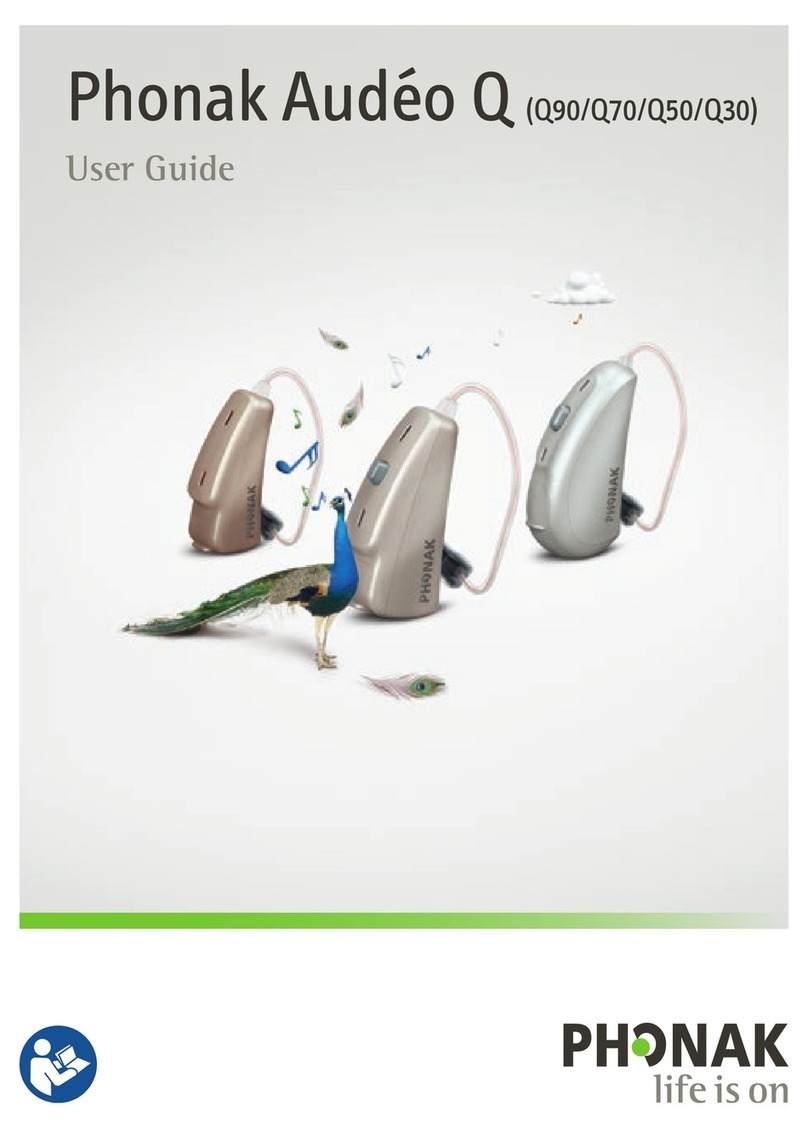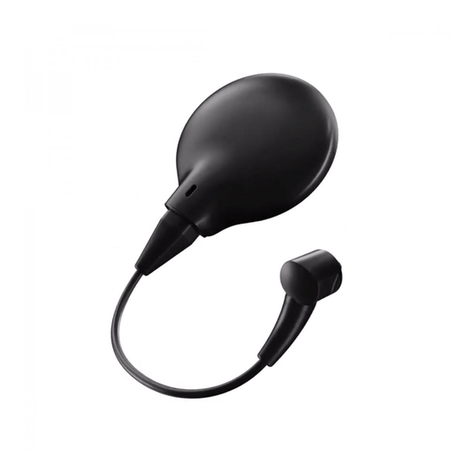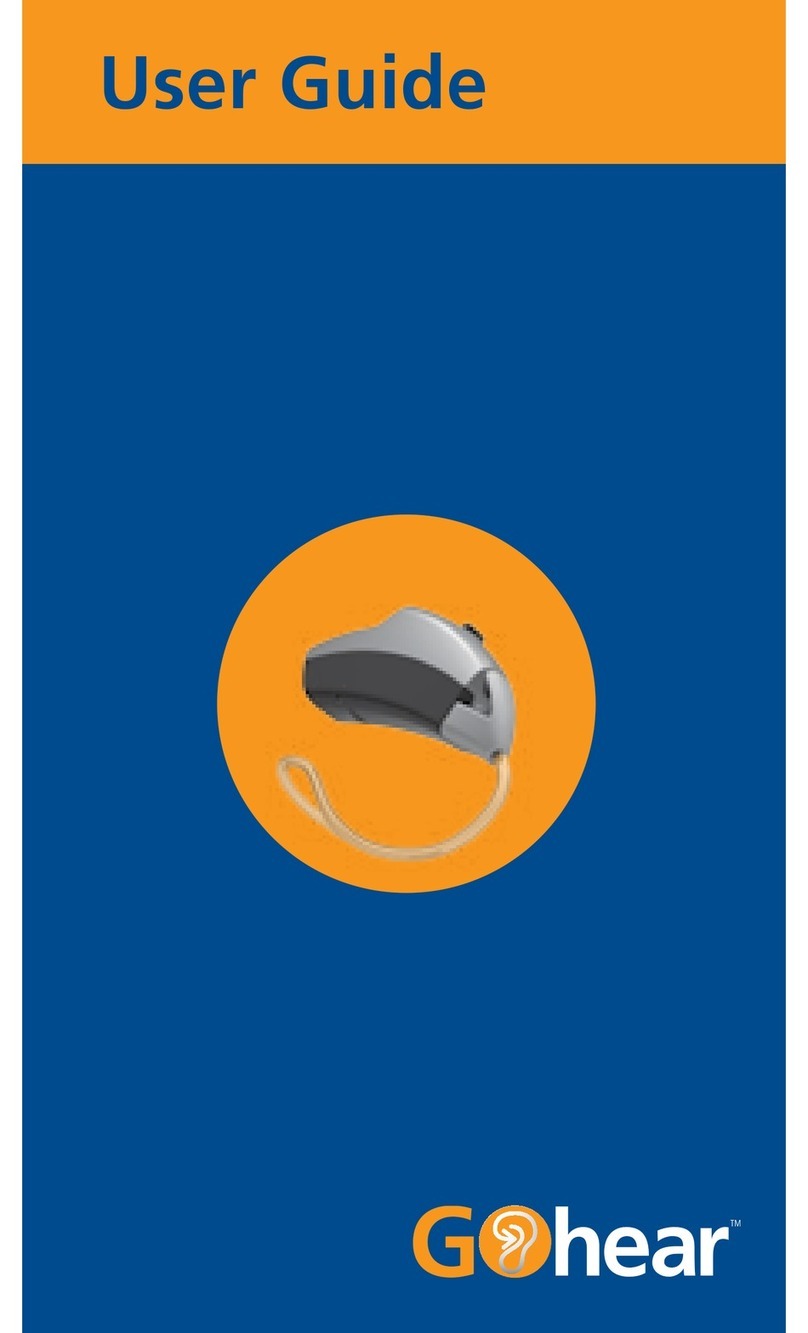16 17
Operation
Directional Settings
Your hearing system may have a directional microphone to
help improve speech understanding in noisy situations.
Ask your hearing care professional about your particular
directional settings.
Telephone Use
Your hearing instruments are equipped with tools
to help you effectively communicate on the telephone. Ask
your hearing professional about your telephone solution.
Automatic Telephone and Automatic Telecoil
These options activate the telephone response
automatically when used with a hearing aid compatible
telephone. To use, place the telephone receiver on your
ear as you normally would and the hearing instrument will
select the telephone setting. It might be necessary to move
the telephone receiver slightly to find the best reception.
Once the telephone is removed from the ear, the hearing
instrument will switch back to the normal listening mode.
Note: Consult with your hearing professional if your
device does not seem to switch to the telephone setting
automatically.
My hearing instruments have the following telephone setting(s):
Automatic Telephone. See below.
Automatic Telecoil. See below.
Telecoil and Manual Switching. See page 17.
(Program # _____________________________).
Operation
Telecoil and Manual Switching
Hearinginstrumentswithamanualtelecoilallow
you to switch the devices to telephone mode
when needed.
Manually switched telecoils
are activated by choosing
the telecoil setting using the
Multifunction button.
General Telephone Use
Some hearing instruments
work best by holding the
phone close to, but not fully
covering your ear. In some
instances, if you encounter
whistling (feedback), tilt the
receiver at an angle until the
whistling stops. Additionally,
the hearing instrument in the
non-phone ear (ear opposite
the phone) may switch to a
telephone setting to reduce
background sounds. Your
hearing professional can
provide instructions and
techniques for your specific
needs.
